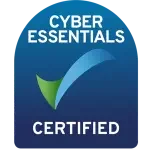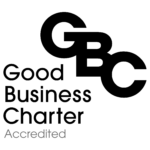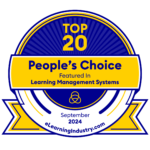
This is my second blog from the CEO’s Chair and I’d like to share my top 5 rules to manage meetings, among some other thoughts and updates. Given that I told you five months ago that I’d post a new blog every month, you’d be forgiven for wondering where I’ve been. This might seem like a poor excuse… but I’ve been in meetings!
No, really, I promise I haven’t been relaxing in a spa or enjoying various lunches! In fact, we’ve been increasing the number of meetings we have – and I promise we haven’t all gone mad!
IN THIS ARTICLE...
Getting Creative with More Meetings
Developing the solutions we provide to solve your business need is a very creative, imaginative process. This can surprise our Client Family and others we share our journey with, but let me explain why. Sometimes the initial stages of research and development are more art than science.
It always starts with an idea and the question “How can we achieve this?”; the team bounces around ideas, splits off, and experiments, returning to exchange more ideas.
I was concerned that, as a company, we weren’t communicating in a way that supports creativity.
Everyone here has everyone else’s direct number, at any level. Everyone has at some point spoken with every other member of the team. All team members have an open-door policy. All of our developers work in one office – you may have read previously!
Lots of Conversions ≠ lots of Communication
What we didn’t have, until recently, was a formal process for communication within teams and between teams. Even in a smaller (but growing) company, this was hampering our efficiency and creativity – lots of conversations are not the same as lots of communication.
- I wanted to make sure that our Development teams were hearing from the Client Success and Support Teams, about what Client Family Members were asking for.
- I wanted to make sure that the Client Success and Support Teams were hearing from the Development Teams, on a regular basis about progress on R&D.
- In addition, we needed to ensure we began to meet regularly; to review and discuss any occasions where we didn’t deliver as well as we’d hoped, for any member of our Client Family.
Meetings, meetings, meetings…
All of this led to an increased number of regular meetings, and more brainstorms within teams. I have also introduced company meetings once a month, to not only bring the teams together but also both sides of the pond together!
All developers across each product meet once a week; the Support and Client Success teams meet together at least once a week; our Instructional Designers meet weekly.
It may surprise people to know I join every meeting!
There’s a reason for this which I’ll share in a moment, and it may well surprise you…
Our Top 5 Rules to Manage Meetings
We want our meetings to be friendly and open environments, where the team feels comfortable sharing. To this end we have a handful of rules to manage meetings in a constructive way:
- There’s no such thing as a bad idea, only one we don’t use now.
- There’s no such thing as asking a silly question.
- There’s no such thing as failing, only testing an idea that turned out not to work.
- There’s no point in apportioning blame, owning your mistake is applauded.
- Don’t ramble, make a point quickly and clearly.
Why I Attend Every Meeting
The reason I feel it’s important for me to attend each meeting isn’t to take over or micromanage the team. It’s about having the opportunity to hear what the team has to say, listen to their ideas, keep up-to-date with the feedback from our Client Family and last but not least, ask what I can do to help.
To quote Steve Jobs “It doesn’t make sense to hire smart people and tell them what to do; we hire smart people so they can tell us what to do”!
Replacing Our In-House Systems
As well as looking at the meeting side of communication we’ve replaced most of the in-house systems we use. We’ve replaced our project tool, some of our development tools, and our CRM system.
A key aspect of any new solution we select to support our processes is that it has to make communication more seamless.
We’ve recently selected a new tool to manage our onboarding processes internally. The tool facilitates a workflow where every time a task is completed in the workflow you notify the next team member of their turn to complete their task. We believe this will significantly speed up onboarding, as the new platforms and processes we are using have increased efficiency internally.
So Why Make All These Changes?
These changes I’ve implemented with the teams’ support, even the rules to manage meetings, have also had a positive effect on the way I work. They say that leadership makes you quickly aware of where you can improve. I’ll be honest with you and share that when I stepped into the CEO role, my friends and family commented that I might have to sharpen my delegation skills… I cannot say I wasn’t concerned about this myself!!
The wonderful and surprising thing is that not only have these structures enabled the team to keep pushing forward, they’ve also allowed me to realize that I can let others get on with it – and when I do, they do!
I couldn’t be prouder of the team or more excited for the amazing plans we have ahead of us. Maybe I should go check out those spa menus!


Claire is a leader in learning technology, starting her career in the tech space in 2003 (after being told not to pursue IT and Business Studies by her teachers at school). Claire became Director & CEO of Intellek in 2017 when the board bought into her bolder, bigger, braver vision. Claire also co-founded another tech company to support the new T-Level qualifications being rolled out by the UK Government. An advocate for Women in STEM and leadership roles, with a passion for digital transformation and its impact on the global economy. Claire’s personal vision, through her initiative Opening Doors Global, is to ensure that every child gets access to education and a safe environment.





